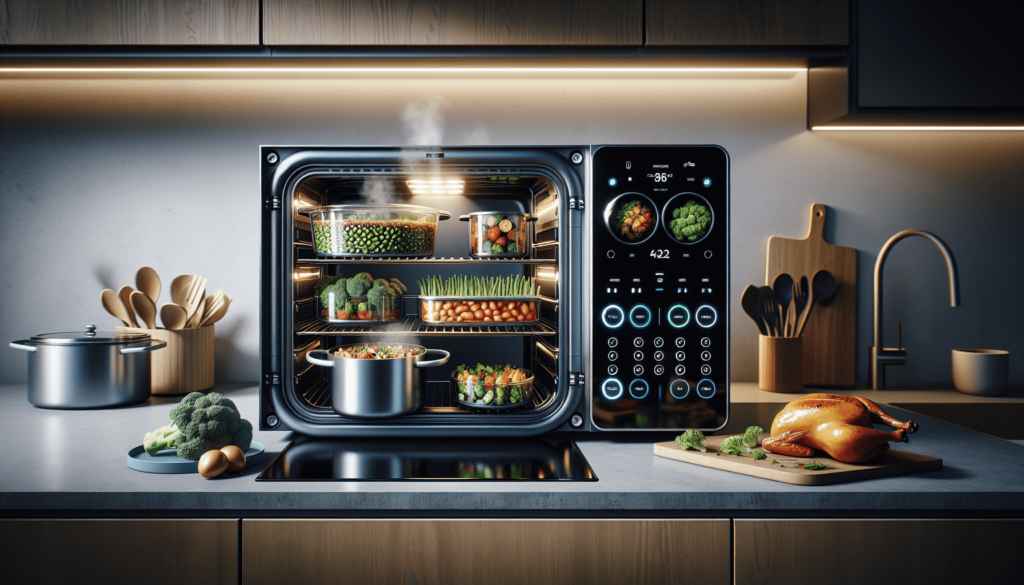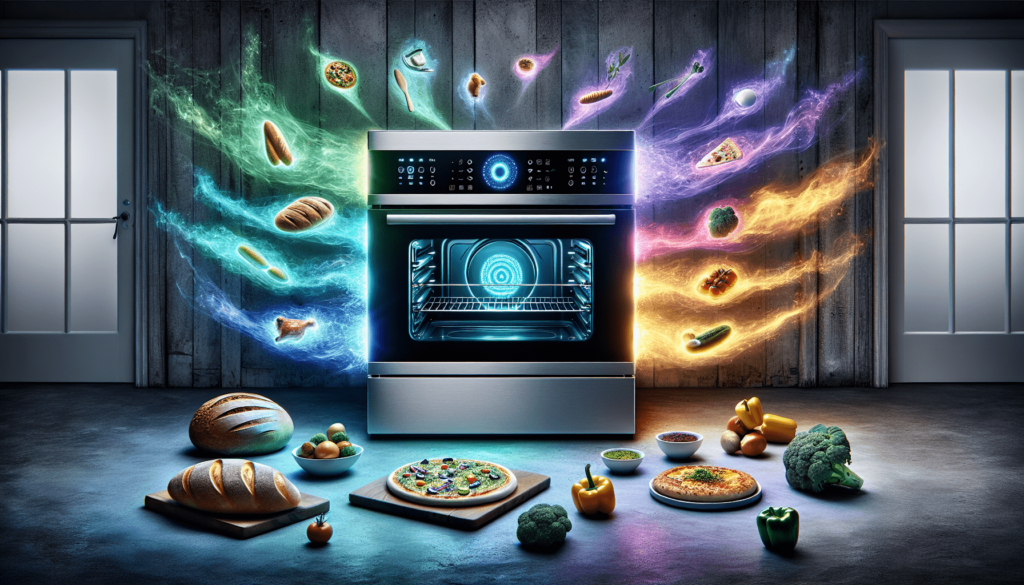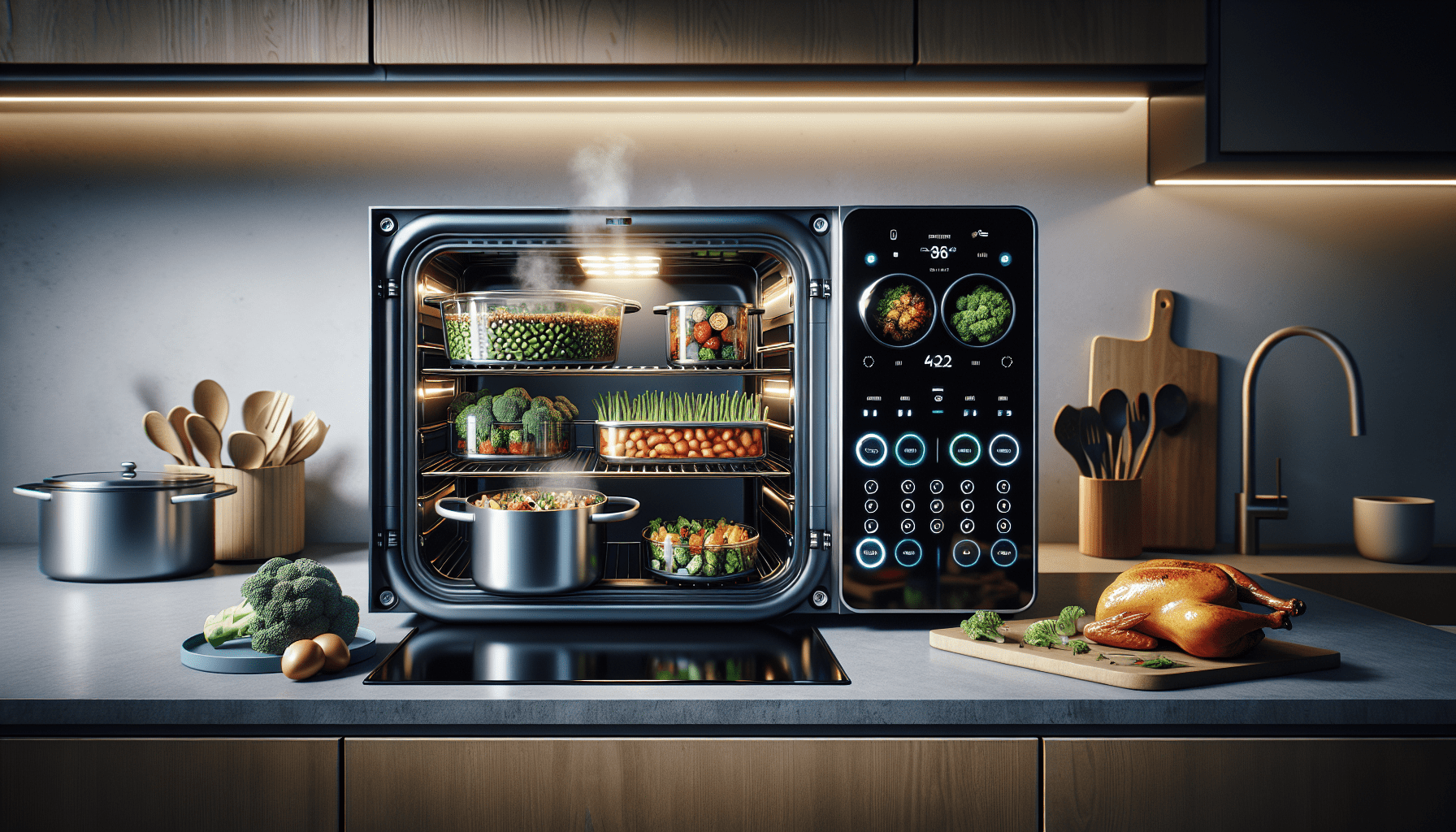Thinking of trying out new cooking modes in your smart oven? You might be surprised to learn that not only can these modes enhance the flavor and texture of your food, but they can also unlock its nutritional potential. From roasting to steaming, each cooking mode has its own unique way of preserving and enhancing the nutrients in your meals. In this article, we will explore the various cooking modes in your smart oven and how they can help you make healthier, more nutritious meals for you and your family.

Introduction
Welcome to a comprehensive guide on how to unlock the nutritional potential of different cooking modes in your smart oven. In this article, we will explore the various cooking modes available in smart ovens and how they can help you prepare nutritious meals for you and your family.
What is a Smart Oven?
A smart oven is a technologically advanced kitchen appliance that offers a range of cooking modes designed to make cooking more convenient and efficient. With features like precise temperature control, programmable settings, and integration with smart devices, smart ovens are revolutionizing the way we cook.
Importance of Nutrition in Cooking
Nutrition plays a crucial role in our overall health and well-being. The food we consume provides us with the essential nutrients our bodies need to function properly. Cooking methods can greatly impact the nutritional content of our meals, and by understanding how to optimize these methods, we can ensure that we are maximizing the nutritional value of the food we prepare.
Overview of Cooking Modes in Smart Ovens
Smart ovens come equipped with a variety of cooking modes, each offering unique benefits and advantages in terms of taste, texture, and nutritional value. Let’s explore the different cooking modes and how they can elevate your cooking experience.
Baking Mode
Retaining Nutrients in Baking
Baking is a popular cooking method that involves dry heat in an enclosed environment. When done right, baking can help retain the natural nutrients present in foods. Unlike other cooking methods that involve frying or boiling, baking requires little to no added fats or oils, making it a healthier option.
To preserve the nutritional value of your baked goods, opt for whole grain flours instead of refined ones. Whole grain flours are rich in fiber, vitamins, and minerals, making them a more nutritious choice. Additionally, incorporating fruits, vegetables, and nuts into your baking recipes can add an extra dose of vitamins, antioxidants, and healthy fats.
Best Foods to Bake for Optimal Nutrition
When using the baking mode in your smart oven, consider baking foods that are naturally high in nutritional value. Whole-grain bread, homemade granola bars, vegetable casseroles, and roasted salmon are just a few examples of nutritious foods that can be easily prepared in the baking mode of your smart oven. Get creative with your recipes and experiment with different ingredients to make wholesome and delicious meals.
Grilling Mode
Health Benefits of Grilling
Grilling is a cooking method that involves cooking food over direct heat. While grilling is often associated with outdoor barbecues, many smart ovens now come with a built-in grilling mode, allowing you to enjoy the benefits of this cooking method all year round. Grilling is known for its ability to enhance the natural flavors of food while keeping it juicy and tender.
In terms of nutrition, grilling allows excess fat to drip away from the food, making it a healthier alternative to frying. Additionally, grilling helps retain more vitamins and minerals compared to other cooking methods, as the shorter cooking time minimizes nutrient loss.
Cooking Techniques for Maximum Nutritional Value
To maximize the nutritional value of grilled foods, opt for lean cuts of meat, such as chicken breast or fish fillets, and marinate them in flavorful herbs and spices. Marinating not only adds depth to the flavor but also helps reduce the formation of harmful substances that can be produced during grilling.
Incorporating vegetables into your grilling recipes is another great way to boost the nutritional content of your meals. Grilled vegetables like peppers, zucchini, and eggplant are rich in fiber and antioxidants. Simply brush them with a little olive oil and season with herbs and spices for a delicious and nutritious side dish.
Roasting Mode
Preserving Nutrients When Roasting
Roasting is another versatile cooking mode available in smart ovens. This cooking method involves cooking food at high temperatures, typically in an open pan with little to no added liquids. Roasting helps retain the natural flavors and textures of foods while sealing in the nutrients.
To preserve the nutrients when roasting, it is important to avoid overcooking. Overcooking can lead to the loss of water-soluble vitamins like vitamin C and B vitamins. Additionally, using minimal amounts of oil or opting for healthier alternatives like olive oil can help reduce unnecessary calories while still achieving the desired texture and flavor.
Roasting vs. Other Cooking Methods
Compared to other cooking methods like boiling or frying, roasting requires less additional fat, making it a healthier option. During roasting, the high heat helps caramelize the natural sugars present in food, resulting in a delicious golden brown crust. This caramelization process adds depth and complexity to the flavors, making roasted foods incredibly satisfying.
Furthermore, roasting allows you to cook a variety of foods, from vegetables and meats to nuts and seeds. It’s a versatile cooking mode that can be used to prepare entire meals, making it a convenient option for busy individuals and families.

Steaming Mode
Advantages of Steaming for Nutritional Content
Steaming is a gentle cooking method that involves cooking food using steam generated from boiling water. This cooking mode is highly regarded for its ability to preserve the natural flavors, colors, and nutrients of food. Steaming allows the food to cook evenly while retaining its moisture, resulting in tender and nutrient-rich dishes.
One of the main advantages of steaming is that it requires no additional fats or oils, making it a healthy cooking option. Steaming helps retain water-soluble vitamins and minerals that can be lost through other cooking methods like boiling. Additionally, steamed foods are often more vibrant and visually appealing, making them more enticing to eat.
Key Tips for Nutrient-Rich Steamed Dishes
To make the most of your smart oven’s steaming mode, consider using a variety of colorful vegetables. Each color represents different nutrients, and by incorporating a rainbow of vegetables, you can ensure that you are getting a wide range of vitamins, minerals, and antioxidants.
Experiment with different herbs, spices, and citrus flavors when steaming to add depth and complexity to your dishes without the need for excessive salt or unhealthy seasonings. Fresh herbs like cilantro, basil, and dill can elevate the flavors, while additions like lemon or lime juice can bring a tangy brightness to your steamed creations.
Broiling Mode
Nutritional Benefits of Broiling
Broiling is a cooking method that involves cooking food at high temperatures directly under the heat source. This cooking mode is particularly effective for achieving crispy exteriors while maintaining moist interiors. When used correctly, broiling can help retain the natural flavors and nutrients of the food.
One of the key nutritional benefits of broiling is that it requires little to no added fats or oils. The excess fats from the food drip away, making it a healthier option compared to frying. Broiling also tends to be a quicker cooking method, which helps preserve the water-soluble vitamins that can be lost with prolonged cooking.
Choosing the Right Ingredients for Healthy Broiling
When broiling in your smart oven, opt for lean cuts of meat or fish to minimize unnecessary fats. Marinades and rubs can add flavor without the need for excessive amounts of oil or salt. Additionally, incorporating vegetables like asparagus, bell peppers, or cherry tomatoes into your broiling recipes can add color, texture, and an extra dose of fiber and antioxidants.
To avoid overcooking and ensure even cooking, it is important to adjust the rack position and keep a close eye on the broiling process. The intense heat can cause food to burn quickly if left unattended, so it’s essential to monitor the cooking progress.
Slow Cooking Mode
Retaining Nutritional Value in Slow-Cooked Meals
Slow cooking, also known as crock-pot cooking, is a method that involves cooking food over a long period of time at low temperatures. This cooking mode is ideal for busy individuals as it allows you to prepare meals in advance and come home to a delicious and nutritious dish.
One of the main advantages of slow cooking is that it tenderizes tough cuts of meat while retaining their nutritional value. The long, slow cooking process allows the flavors to meld together and enhances the natural sweetness of ingredients. Slow cooking also allows you to use minimal amounts of fat while still achieving rich and satisfying flavors.
Ideal Recipes for Nutrient-Dense Slow Cooking
When utilizing the slow cooking mode of your smart oven, consider recipes that feature lean cuts of meat like chicken or pork tenderloin. These proteins will become incredibly tender and moist after hours of slow cooking. Pair them with a variety of vegetables and legumes to create a complete and balanced meal packed with vitamins, minerals, and dietary fiber.
Slow-cooked soups, stews, and curries are also wonderful options as they allow the flavors to develop over time. Opt for whole grains like barley or quinoa to add heartiness and additional nutrients to your slow-cooked meals. The possibilities are endless when it comes to slow cooking, so don’t be afraid to experiment with different ingredients and flavors.
Air Frying Mode
Healthy Frying with Less Oil
Frying is a cooking method that often gets a bad reputation due to its high oil content. However, with the air frying mode in your smart oven, you can enjoy the crispy and delicious texture of fried foods with significantly less oil. Air frying uses hot air circulation to evenly cook the food, resulting in crispy exteriors and moist interiors.
The main advantage of air frying is that it significantly reduces the amount of unhealthy fats consumed. It requires only a fraction of the oil typically used in conventional deep frying, making it a healthier alternative. Air frying also helps reduce the formation of harmful substances like acrylamide, which can be produced during high-heat cooking.
Nutritionally Rich Foods to Air Fry
When using the air frying mode in your smart oven, consider air frying a variety of nutrient-rich foods. Vegetables like sweet potatoes, Brussels sprouts, and zucchini can be transformed into delicious fries or crispy snacks with just a little bit of oil. Air frying also works wonderfully for proteins like chicken wings or tofu, resulting in crispy and flavorful bites.
To add more depth of flavor and nutrition, consider using herbs, spices, or even a sprinkle of nutritional yeast to season your air-fried creations. Experiment with different combinations to find your favorite flavors.
Sous Vide Mode
Preserving Nutrients with Precise Temperature Control
Sous vide is a cooking method that involves vacuum-sealing food in a bag and cooking it in a water bath at a precise temperature. This cooking mode is perfect for achieving restaurant-quality results with minimal effort. Sous vide allows you to cook food evenly and retain moisture while preserving the natural flavors and nutrients.
The precise temperature control in sous vide cooking ensures that the food is cooked to the desired doneness without overcooking or undercooking. This helps retain vital nutrients that can be lost through other cooking methods. Additionally, the sealed environment keeps the flavors locked in, resulting in incredibly tender and flavorful dishes.
Tasty and Nutritious Sous Vide Recipes
To make the most of your smart oven’s sous vide mode, experiment with a variety of proteins like steak, chicken breast, or salmon. Sous vide cooking allows you to achieve precise and consistent results, ensuring that your proteins are cooked to perfection. Pair them with your favorite vegetables and whole grains for a complete and nutritionally balanced meal.
Sous vide cooking also opens up the possibility of creating decadent desserts like custards or cheesecake. The gentle and even cooking method ensures that the desserts are rich and creamy, with a silky smooth texture. The sous vide mode in your smart oven allows you to explore a wide range of recipes and unleash your culinary creativity.
Conclusion
In conclusion, smart ovens offer a wide range of cooking modes that can unlock the nutritional potential of your meals. By understanding the unique advantages of each cooking mode and making informed choices in ingredient selection and cooking techniques, you can prepare nutritious and delicious meals for yourself and your loved ones.
Experiment with different recipes and ingredients to explore the endless possibilities that your smart oven has to offer. Whether you’re baking, grilling, roasting, steaming, broiling, slow cooking, air frying, or using the sous vide mode, remember to prioritize the nutritional content of your meals. With a little creativity and innovation, your smart oven can become your most valuable tool in achieving healthier and more satisfying culinary experiences. Happy cooking!
